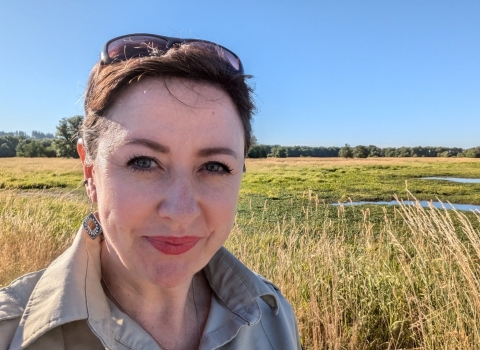On February 8th, 2024, the Department of the Interior announced the commitment of more than $157 million through 2026 towards projects that build climate resilience and address climate change climate change
Climate change includes both global warming driven by human-induced emissions of greenhouse gases and the resulting large-scale shifts in weather patterns. Though there have been previous periods of climatic change, since the mid-20th century humans have had an unprecedented impact on Earth's climate system and caused change on a global scale.
Learn more about climate change impacts; restore healthy lands and waters; and enhance communities’ qualities of life.
This includes more than $18 million allocated to various DOI Bureaus in Alaska to advance co-stewardship and salmon restoration in Alaska’s Yukon, Kuskokwim and Norton Sound region (through the Gravel to Gravel Keystone Initiative and other BIL ecosystem restoration funding). The Department also allocated in excess of $25 million to support the National Early Detection and Rapid Response Framework to give land managers and partners an upper hand in safeguarding the nation from invasive species invasive species
An invasive species is any plant or animal that has spread or been introduced into a new area where they are, or could, cause harm to the environment, economy, or human, animal, or plant health. Their unwelcome presence can destroy ecosystems and cost millions of dollars.
Learn more about invasive species over the three years.
This year, nearly $2.3 million of those national funds will go towards staffing and lab improvements at the U.S. Fish and Wildlife Service’s Alaska Conservation Genetics Lab to support invasive species early detection and rapid response efforts, as well as five landscape-scale projects supported and stewarded by the Service in Alaska:
Molecular Lab Network for Invasive Species eDNA Technologies
A network of U.S. Fish and Wildlife Service genetic laboratories located in Alaska, New Mexico, and Georgia will increase national capacity for eDNA monitoring, coordination, standards development, and advancement of eDNA science. In addition to these three surveillance labs, the U.S. Geological Survey will support the network with an implementation science support lab in Idaho. This project is part of a coordinated, multi-bureau series of projects that advance a National Early Detection and Rapid Response Framework.
“State of our Watershed” Plan
Partners, including the Arctic, Yukon, and Kuskokwim Tribal Consortium and Kawerak Incorporated, will map and assess salmon habitat for past mining activity and other human disturbance. The aim is to identify the highest priority and most cost-effective habitat restoration actions needed to recover salmon populations in selected tributaries. Information from local knowledge holders in communities adjacent to impacted tributaries will be incorporated.
Invasive Species Early Detection and Prevention
Partners including the U.S. Customs and Border Protections and the State of Alaska will focus on the early detection of invasive species at the U.S/Canada border. These partners will continue to carry out watercraft inspections at the Alcan Port of Entry to prevent the introduction and spread of aquatic invasive species like zebra mussels and New Zealand mud snails into Alaska.
Interior Alaska Invasive Species Coordination
Funding will go towards collaborative partner efforts to help prevent the introduction of invasive species that are harmful to fish and wildlife in the Gravel to Gravel geography. The U.S. Fish and Wildlife Service will fund a coordinator based in Fairbanks, Alaska in partnership with organizations within the Cooperative Invasive Species Management Area.
Invasive Species Biosecurity
This project will improve awareness and support implementation of the use of Hazard Analysis and Critical Control Point (HACCP) planning and other biosecurity practices. This effort is part of a coordinated, multi-bureau series of projects focused on preventing the introduction and spread of invasive species Alaska. Prevention avoids the need for expensive eradication efforts. The project will benefit myriad stakeholders including tribal and other entities associated with the Arctic-Yukon-Kuskowkwim Tribal Consortia and the Gravel to Gravel Keystone Initiative. The project will provide HACCP training and develop biosecurity best practices for agency and partner use to prevent introduction of invasive species.
Invasive Species Public Awareness Outreach
The U.S. Fish and Wildlife Service will coordinate with other Interior bureaus to implement targeted invasive species public awareness outreach in the Yukon-Kuskokwim region, including installation of exhibits at the Tok Alaska Public Lands Information Center. This project is part of a coordinated, multi-bureau series of projects focused on preventing the introduction and spread of invasive species in Alaska.
Other agencies including the Bureau of Indian Affairs, Bureau of Land Management, National Park Service, and the U.S. Geological Survey are also receiving funds to work in partnership with the state and others to help with invasive species prevention and early detection efforts within the Gravel to Gravel geography.
For more information
Department of Interior Press Release
Gravel to Gravel Keystone Initiative for People, Salmon, and the Land (FWS)




